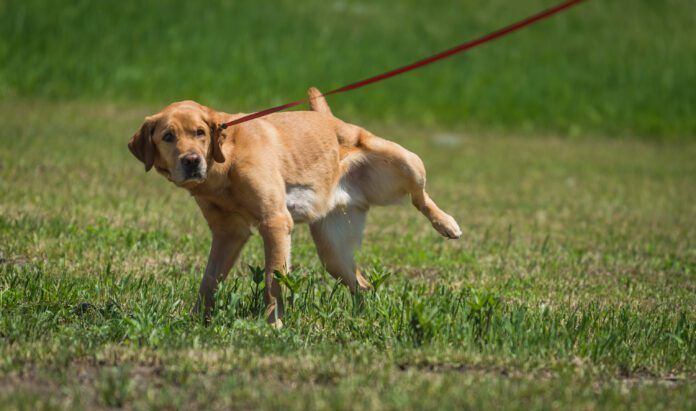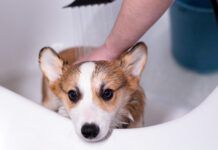How much dog urine is needed for a sample? Not that much! Believe it or not, a teaspoon (5 milliliters) is enough to run a urinalysis. So even if it looks like you didn’t get much, bring it in to see if your veterinarian says it’s enough.
How to get a urine sample? Start by choosing a low-profile, large diameter container that is clean and dry. A foil pie plate works well. With the larger diameter, it’s easier to get under the dog and your aim doesn’t have to be spot on. Just nonchalantly get it in the general vicinity and you’ll usually be successful. Then pour the sample into a clean, dry, leakproof container and get it to your veterinarian ASAP.
It’s easy to get a urine sample from a dog, although you do need to be quick. Most male dogs who pee all the time, lift their leg, and don’t particularly care about potty privacy or personal space while urinating. The taller the dog, the easier. Females, puppies who squat, and male dogs who squat are a little tougher. But you can do it.
Smaller female dogs who squat low to the ground may take offense when you approach them while urinating. Try for first thing in the morning when you know her bladder is full. Make sure she is on a four- to six-foot lead, so she can’t get that far away from you and you’re not frantically running at her when she squats. If you are agile enough to squat, try the nonchalant pie plate approach described above. If you can’t physically get low enough, you can either purchase a canine urine collection kit, which looks like a saucer on the end of a pole, or you can duct tape a soup ladle to the end of a pole. Remember, whatever you use must be clean and dry.
If you can’t get the sample, don’t panic. When necessary, your veterinarian can collect a sample from your dog either straight from the bladder with a needle (cystocentesis) or via urethral catheterization.
The fresher the specimen, the more accurate the information is for your veterinarian. It’s not a bad idea to drive your dog over to the clinic and catch your sample right outside. If you’d rather not do that, plan to collect your sample when you can get to the clinic within a few hours. If you can’t get to the clinic right away, store the urine sample in the refrigerator, and be sure to let your vet know what time it was collected.






